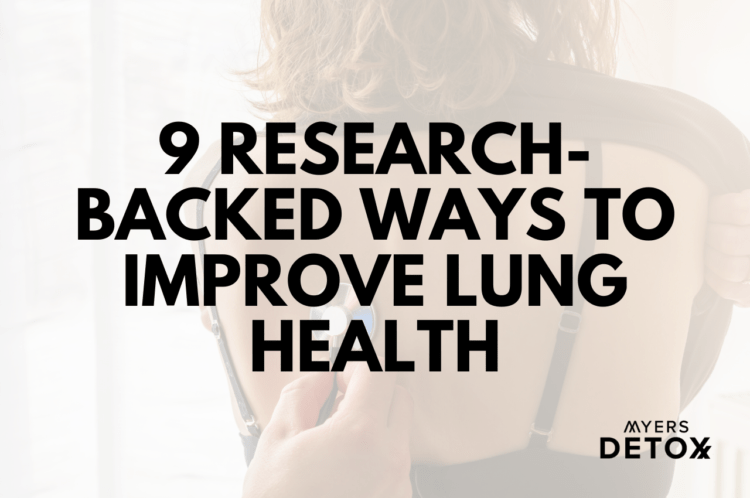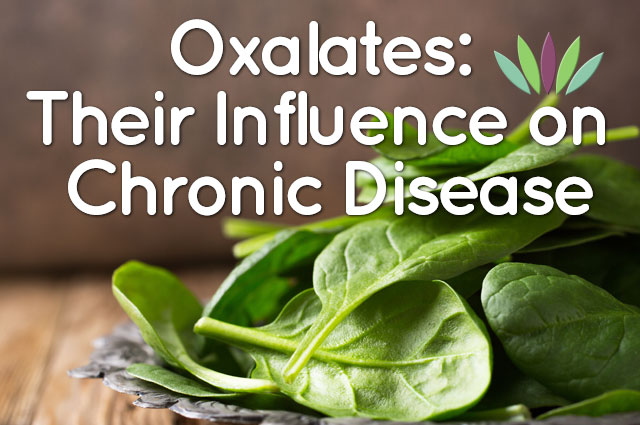9 Research-Backed Ways to Improve Lung Health

Ways to improve lung health have taken the spotlight in the past few weeks in the health and wellness world, and for good reason. Check out this article to learn:
- The function of your lungs
- The best ways to support your lungs from the outside in
- The best ways to support your lungs from the inside out
- Nutritive support for optimal lung health
Just like every other organ system in your body, your lungs require care and attention if you want them to function optimally.
So let’s dive in.
Your Lungs 101
Your lungs are a key part of your respiratory system, located in your chest behind your rib cage.
The primary function of your lungs is to bring in oxygen from the air you breathe and pass it into your bloodstream to be utilized by the cells and tissues in your body. From here, oxygen is exchanged into carbon dioxide and carried back to your lungs to be exhaled.
In addition to their crucial role in oxygen delivery, your lungs play a role in balancing the pH of your body, filtering small blood clots and air bubbles, and most importantly — protecting you from bacteria, viruses, and other pathogens.
The mucus that lines your lungs can trap dust and other unwanted particles, while tiny hair-like projections called cilia help to move the particles out of your body (either via coughing or swallowing to be broken down during digestion).
Respiratory diseases can occur from a number of factors including inflammation (asthma, COPD), physical restriction due to obesity or fibrosis, infections (from bacteria, fungi, etc), oxidative stress, and tumors.
Luckily, there are plenty of ways to maintain the health of your lungs and respiratory system if you know just what to avoid and what to seek out.
Ways To Support Your Lungs and Improve Lung Health
#1 Exercise
Just like any other muscle or system in your body, your lungs need to be trained to grow stronger. The best way to train your lungs? Exercise.
Research shows that when you engage in physical activity, it can increase your lung capacity, which means you take in more oxygen. This is partly due to the interplay between your heart and your lungs during physical movement, as well as increased demand for oxygen by your muscles[1].
As you become more physically fit, your ability to bring oxygen into your bloodstream improves — which is one of the reasons that you’re able to increase your endurance over time.
When it comes to exercise for lung fitness, you don’t have to go all out. It could be as simple as a brisk 30-minute walk, gardening, or even bicycling[2]
If you’re someone who has been sedentary most of your life, don’t worry — it’s not too late for you. Research shows that even in previously sedentary people aerobic exercise can improve lung function[3].
#2 Avoid Pollutants
Pollutants are one of the worst offenders when it comes to lung health. And believe it or not, the pollutants that can accumulate inside your home are often worse than the environmental pollutants you’ll find outside. Since most people spend the majority of their time inside, this can become a significant issue.
Aside from the obvious toxins like asbestos, there are several other sneaky sources of pollutants that can be found lurking in the air inside your home, these include[4]:
- Materials from furniture
- Household cleaning products
- Certain types of pressed wood products (like furniture and cabinetry)
- Personal care items
- Central heating and cooling systems
- Humidification devices
- Air fresheners
- Candles
- Mold
- Dust
- Pet dander
Perhaps the biggest offender of lung health of all, however, is smoking. If you want to manage and maintain lung health, the number one thing you can do is stop smoking and avoid secondhand smoke.
For indoor pollutants, your best bet is to use an indoor air purification system. These devices can clear the air in your home of pollutants, as well as allergens, mold, and bacteria. One of my favorite air purification systems is the Breathe Safe Plasma Air Purifier by Creatrix Solutions.
This device not only clears toxins, but it also increases the amount of oxygen in your air up to 118%.
#3 Breathing Exercises
Breathing exercises have a similar effect on lung capacity as physical exercise. You can look at breathing exercises as a way to condition and target your lungs.
In fact, pulmonary rehabilitation specialists use two different breathing techniques to help patients with asthma and COPD with their lung capacity — diaphragmatic breathing and pursed-lip breathing.
Over time, when your lungs aren’t working optimally, they can lose some of their “springiness” that makes it possible to breathe in and out in a fluid manner. This impacts the ability of your diaphragm to bring fresh oxygen to the lungs, and old, stale air can accumulate.
Breathing exercises can help rid your lungs of accumulated stale air, enhance your intake of oxygen, and assist the diaphragm of doing its job of contracting and bringing in fresh air[5].
Pursed Lip Breathing
Pursed lip breathing is done by breathing in through your nose, and then breathing out twice as long through your mouth while pursing your lips. This exercise keeps your airways open long by reducing the number of breaths you take. Repeat for five to ten minutes.
Diaphragmatic Breathing
With diaphragmatic breathing, begin by breathing in through your nose, filling your belly up with air. Pay specific attention to filling your belly, not your chest, with air by putting a hand on your stomach to see it rise and fall.
To exhale, breathe out through your mouth two to three times as long as you did to inhale. Repeat for five to ten minutes.
#4 Inhale Essential Oils
Essential oils are not only incredibly pleasant smelling, but they can be profoundly healing when used correctly. Many people don’t realize the range of health conditions that essential oils can be useful for, and assisting in lung health is no exception.
Rosemary essential oil and eucalyptus essential oil both contain a bioactive compound called cineole. Cineole has been the subject of several research trials looking specifically at lung diseases for its anti-inflammatory, bronchodilating, and mucolytic (mucus creating) properties.
Research shows that this compound can reduce symptoms in patients with lung diseases such as COPD, asthma, and rhinosinusitis. In fact, one trial found that in just four days, cineole was able to significantly reduce the severity of cough in patients with acute bronchitis[6].
In another study, cineole proved effective at preventing flare-ups of COPD and asthma due to its anti-inflammatory and antioxidant activity[7].
Another essential oil that’s specifically helpful if you’re struggling with a lung infection is oregano oil. Oregano oil is basically anti-everything — antibacterial, antifungal, antioxidant, anti-parasite, anticarcinogenic, antiarthritic. In addition, the bioactive compounds in oregano oil are protective of your heart, liver, and GI system[8].
Finally, if you want to improve lung capacity for exercise, peppermint essential oil may just do the trick. Research shows that when peppermint essential oil is added to water before a workout, it not only improves your respiratory rate, but it also relaxes bronchial smooth muscles and increases oxygen to your brain[9].
#5 Vitamin D
Vitamin D plays a crucial role in immunity, modulating both innate and adaptive immune responses. In fact, a number of immune cells (including T-cells, B-cells, and antigen-presenting cells) have vitamin D receptors on them.
It makes sense then that a deficiency in vitamin D is associated with autoimmunity as well as increased susceptibility to infection[10]
When it comes to respiratory health, this fat-soluble vitamin appears to play a protective role by not only calming inflammation in the airways but also enhancing innate defenses against respiratory pathogens.
While some of vitamin D’s effects are still being uncovered, population studies show that people with sufficient vitamin D status tend to have better lung health and function[11].
When choosing a vitamin D supplement, look for liposomal vitamin D for optimal absorption and bioavailability.
#6 Fruits and Vegetables
It may sound too simple to be true, but getting in enough fruits and vegetables is vital to the health of your lungs. Why? Because just like every other system in your body, your respiratory system requires a specific set of vitamins, minerals, and antioxidants to function properly.
In fact, antioxidants play a critical role in protecting your lungs from oxidative stress — one of the primary causes of lung disease.
Some of the nutrients directly involved in lung health include vitamin C, vitamin E, beta carotene, vitamin A, selenium, zinc, and magnesium. While treating specific conditions with targeted supplements is always important, getting a broad range of nutrients in your diet plays an equally vital role in overall health and wellbeing[12].
In one study, researchers discovered that regular consumption of apples, bananas, and tomatoes were all associated with a delayed decline in lung function in ex-smokers[13].
Therefore, if you want to protect your lungs, it’s essential that you look at your diet.
#7 Sulforaphane
Sulforaphane (SFN) is a plant compound that’s found in cruciferous vegetables, but it’s particularly high in broccoli sprouts. It’s a potent antioxidant and imparts a wide range of health benefits to both your immune and detoxification systems.
As an antioxidant, research shows that SFN protects the cellular lining of your lungs from oxidative damage. This tissue is incredibly sensitive and prone to damage when exposed to factors like cigarette smoke, bacteria, and pollution. Therefore, having the appropriate antioxidant mechanisms in place to protect is vital for lung health[14].
In addition, SFN may also play a protective role against pulmonary fibrosis by inhibiting the formation of fibroids. Pulmonary fibrosis is a lung disease that occurs when lung tissue becomes damaged and scarred, eventually leading to difficulty breathing[15].
Finally, research shows that SFN may help to fight infections in your lungs and combat COPD (chronic obstructive pulmonary disease). By upregulating your antioxidant defenses, SFN assists your immune response and boosts the immune cells in your lungs so they can fight harmful compounds[16].
#8 Moringa
Moringa oleifera is a medicinal plant that’s been used for thousands of years in Ayurvedic medicine for its healing properties. Along with its researched benefits for respiratory health, moringa is also known for its anti-inflammatory, antioxidant, antipyretic, and antidiuretic behavior.
In one study, twenty patients with asthma were given moringa powder for three weeks and then assessed for their asthmatic symptoms. The results showed that moringa significantly enhanced the patient’s ability to forcibly exhale, not only in strength but also in the amount of air that could be expelled[17].
Other research shows that moringa may be effective in treating lung cancer, potentially due to its antioxidant capacity and ability to induce apoptosis (cell death) in cancer cells[18].
#9 Ginger
Much like moringa, ginger is another medicinal plant that’s been used for thousands of years to treat a variety of ailments.
When it comes to lung health, specifically, research shows that ginger can help to relax the smooth muscles of your airways. In people with asthma, this is the same action that corticosteroid inhalers have to calm the inflammation and irritation that comes with asthmatic symptoms[19].
Other research shows that ginger may play a protective role in your lungs, calming inflammation that can result from too much oxygen[20].
Takeaway: Boost Your Lung Health to Support Immunity
Every system in your body works tirelessly to keep you balanced and healthy, and your lungs are certainly no exception. They serve to trap and expel toxic and harmful compounds in the air that you breathe in, protecting you from potential infection.
Therefore, following practices like deep breathing and exercise are incredibly important to maintain the integrity and health of your lungs. You may also want to invest in an air purifier to keep your home free of harmful particulates like mold and other allergens.
If you want to protect yourself from the inside out, however, nutrition is key. Along with a balanced diet rich in fruit and veggies, a daily supplement with a potent source of health-promoting compounds like Daily Detox can provide comprehensive nutritive support so your lungs can continue to protect you.
Daily Detox is rich in antioxidants and contains several lung supportive foods like broccoli sprouts for their sulforaphane content, moringa, and ginger. It also supports your detoxification pathways and general immunity, which in turn enhances your ability to fight infection and stave off illness.
While keeping your external environment as free of toxins as possible will do wonders for your lungs, building up healthy lungs from within is truly the most effective approach to respiratory health.
*These statements have not been reviewed by the FDA. The information herein is not intended to diagnose, treat, cure, or prevent any disease. Nor is it meant to replace or act as a substitute for speaking to a medical doctor and/or licensed health practitioner. Any products discussed are not intended to diagnose, treat, cure, or prevent any disease. They are not intended to replace any medication, medical test(s), or healing modality prescribed by your medical doctor. Please consult with your doctor before beginning a new supplement regimen.
Click Here for References+
- Cheng, Y. J., et al. “Effects of physical activity on exercise tests and respiratory function.” British journal of sports medicine 37.6 (2003): 521-528.
- https://www.lung.org/lung-health-diseases/wellness/exercise-and-lung-health
- Rawashdeh, Arwa, and Nedal Alnawaiseh. “The Effect of High-Intensity Aerobic Exercise on the Pulmonary Function among Inactive Male Individuals.” Biomedical and Pharmacology Journal 11.2 (2018): 735-741.
- https://www.cpsc.gov/Safety-Education/Safety-Guides/Home/The-Inside-Story-A-Guide-to-Indoor-Air-Quality
- https://www.lung.org/lung-health-diseases/wellness/breathing-exercises
- Fischer, Juergen, and Uwe Dethlefsen. “Efficacy of cineole in patients suffering from acute bronchitis: a placebo-controlled double-blind trial.” Cough 9.1 (2013): 25.
- Juergens, U. R. “Anti-inflammatory properties of the monoterpene 1.8-cineole: current evidence for co-medication in inflammatory airway diseases.” Drug research 64.12 (2014): 638-646.
- Friedman, Mendel. “Chemistry and multibeneficial bioactivities of carvacrol (4-isopropyl-2-methylphenol), a component of essential oils produced by aromatic plants and spices.” Journal of agricultural and food chemistry 62.31 (2014): 7652-7670.
- Meamarbashi, Abbas, and Ali Rajabi. “The effects of peppermint on exercise performance.” Journal of the International Society of Sports Nutrition 10.1 (2013): 15.
- Aranow, Cynthia. “Vitamin D and the immune system.” Journal of investigative medicine 59.6 (2011): 881-886.
- Hughes, D. A., and R. Norton. “Vitamin D and respiratory health.” Clinical & Experimental Immunology 158.1 (2009): 20-25.
- Romieu, I. “Nutrition and lung health [State of the Art].” The International Journal of Tuberculosis and Lung Disease 9.4 (2005): 362-374.
- Garcia-Larsen, Vanessa, et al. “Dietary antioxidants and 10-year lung function decline in adults from the ECRHS survey.” European Respiratory Journal 50.6 (2017).
- Jiao, Zongxian, et al. “Sulforaphane increases Nrf2 expression and protects alveolar epithelial cells against injury caused by cigarette smoke extract.” Molecular medicine reports 16.2 (2017): 1241-1247.
- Kyung, Sun Young, et al. “Sulforaphane attenuates pulmonary fibrosis by inhibiting the epithelial-mesenchymal transition.” BMC Pharmacology and Toxicology 19.1 (2018): 13.
- https://www.nih.gov/news-events/nih-research-matters/broccoli-compound-may-combat-copd
- Agrawal, Babita, and Anita Mehta. “Antiasthmatic activity of Moringa oleifera Lam: A clinical study.” Indian Journal of pharmacology 40.1 (2008): 28.
- Dany, M., et al. “Moringa oleifera: Natural leaf extract with potential anti-cancerous effect on A549 lung cancer cells.” Lung Cancer 77 (2012): S22.
- Townsend, Elizabeth A., et al. “Effects of ginger and its constituents on airway smooth muscle relaxation and calcium regulation.” American journal of respiratory cell and molecular biology 48.2 (2013): 157-163.
- Cifci, Atilla, et al. “Ginger (Zingiber officinale) prevents severe damage to the lungs due to hyperoxia and inflammation.” Turkish journal of medical sciences 48.4 (2018): 892-900.









